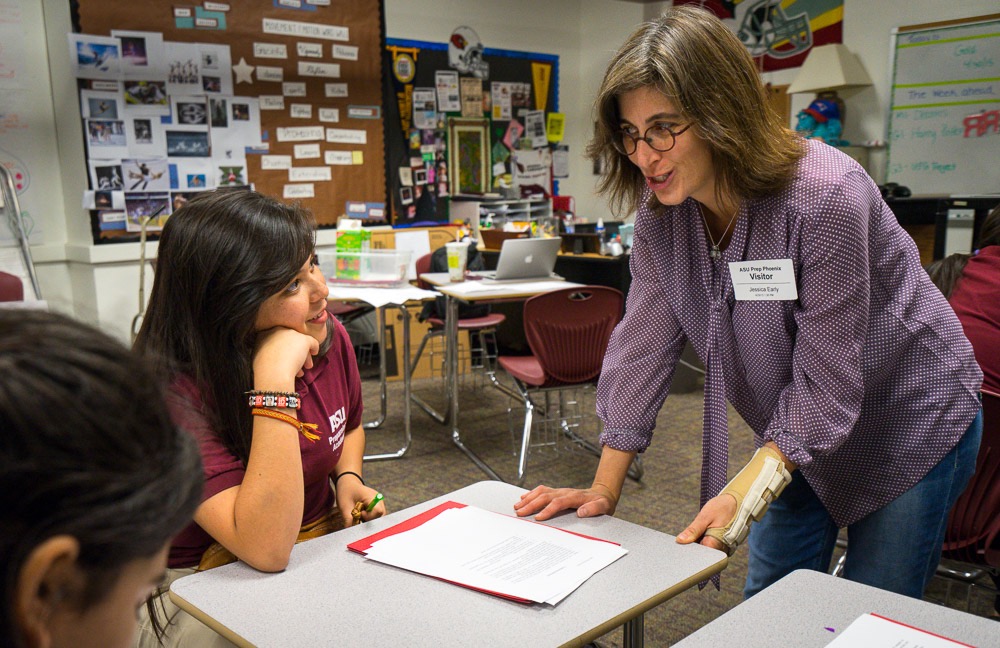By Jessica Early
When I think about my work with the Central Arizona Writing Project, Tracey Flores comes to mind. She came to my office after our first invitational summer institute in 2008 telling me, “Jessica, I have a good idea and I want to work with you and the Writing Project to make it happen.”
Tracey wanted to create an after-school family writing project for her second grade students and their parents at her elementary school in downtown Phoenix, Arizona. Sitting in my office in July, we mapped out a plan. That year, we hosted a family writing project once a week for 12 weeks in Tracey’s classroom. Nine of her second grade students and ten of their parents, along with siblings and cousins, gathered each Tuesday afternoon to take part in an opportunity to write, draw, revise, discuss, and share writing in Spanish and English. We designed and implemented this bilingual after-school experience to honor the voices and stories of students and their families and to build off their cultural and linguistic resources. The initial idea for the program stemmed from Tracey’s belief that her second grade students, although placed in a sheltered ELL program, had incredible strengths as writers. She also knew they had supportive and engaged families who wanted to support their children as writers and readers, but needed a safe space, strategies, and invitations to write alongside their children.
At that time in 2010, the opportunity to write and share in both languages became even more crucial with the heightened political climate that loomed over us each day. In the midst of our family writing project, the immigration debate reached a critical point in Arizona when Governor Jan Brewer signed SB1070 into law. This legislation allowed state police to perform checks on people based on “reasonable suspicion” that they might be an “illegal alien” and allow for an arrest to take place if proper identification was not in their possession. An undocumented father of one of the students in the project was arrested during this time. His wife frantically dropped off their daughter at the family writing project and left to gather money from family members to pay for his release. It was a scary moment, not only for the family, but also for all families involved in the project.
Through our shared stories and writing experiences, the family writing project became a sanctuary and source of support for families dealing with the immediate effects of the law. One mom shared that when her son was feeling upset, she encouraged him to sit down with her and write to help make sense of his emotions. Giving families time to write together was the heart of this project. Families eagerly grouped into comfortable places around the room to fill their pages. Working together to make sense of their stories, partnerships between parents and their children formed. As children worked side-by-side with their parents to craft their stories, many parents shared childhood stories for the first time with their children. Reflecting on our writing, learning new writing skills and strategies, and opening up about our process as writers, allowed students, parents, as well as, Tracey and myself, to realize the power of putting our stories to paper regardless of language background, age, education, or immigration status.
Since the first family writing project in 2008, Tracey and other CAWP teacher-consultants have disseminated and expanded this model to create and implement after-school family writing projects at elementary, middle, and high schools throughout the greater Phoenix area. Later in 2014, with support of the National Writing Project and Kellogg Foundation, we teamed with teachers at an urban, low-income school in downtown Phoenix to create a new after-school family writing project for K-3rd grade students and parents. Since then the work continues and feels ever more relevant today.
For me, this story is a reminder of how the leadership of one teacher-consultant, when deeply connected to the network of a local site and the national network, can create a ripple effect influencing positive change in the teaching of writing for other teachers, students, and families throughout a community and state.
Originally Published at Our NWP
